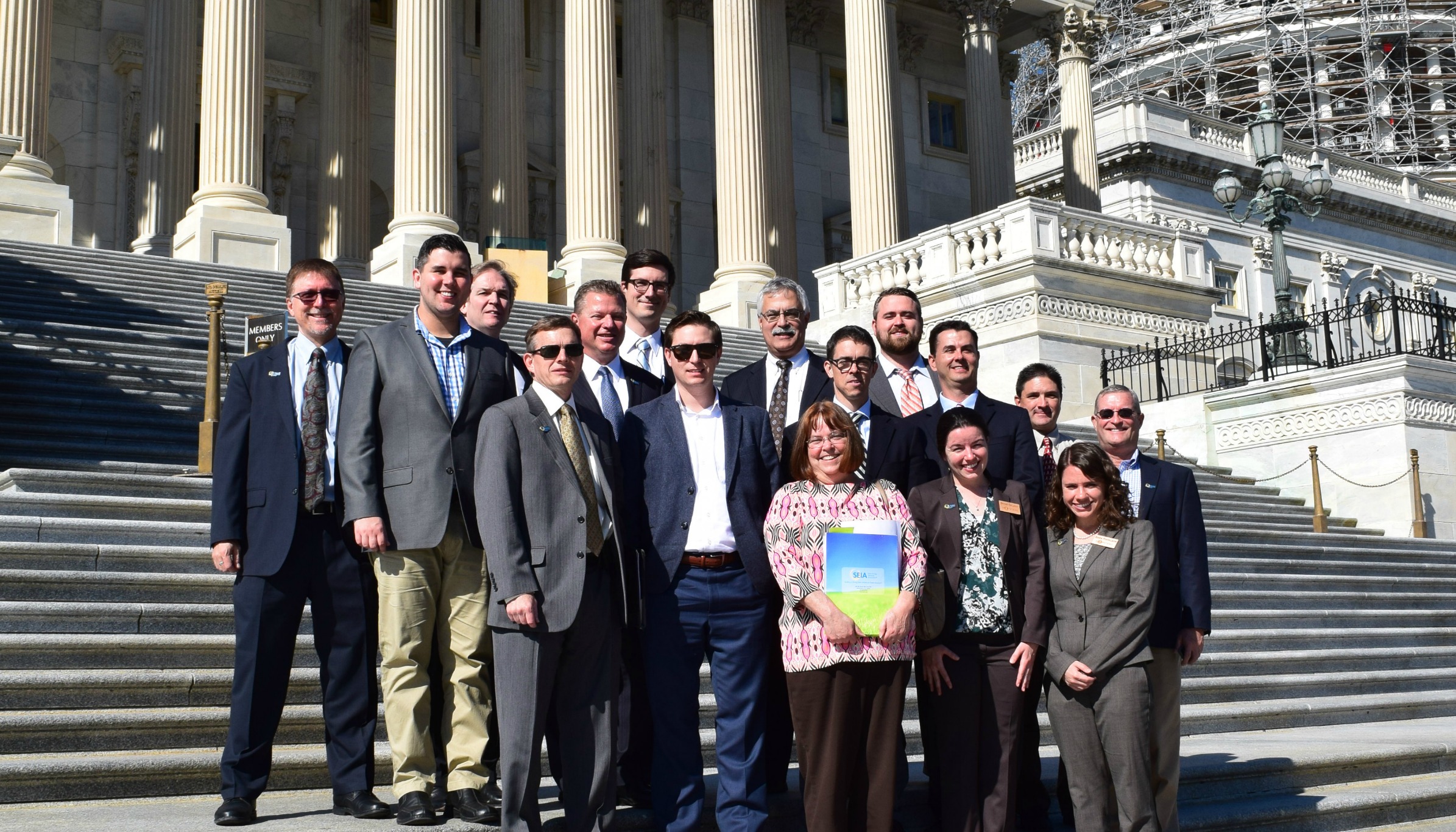The Sol SOURCE is a monthly journal that our team distributes to our network of clients and solar stakeholders. Our newsletter contains trends and observations gained through monthly interviews with our team, and it incorporates news from a variety of industry resources.
Below, we have included excerpts from the July 2018 edition. To receive future Journals, please subscribe or email SOURCE@solsystems.com.

STATE MARKETS
Illinois - On July 12, after approval from the Illinois Commerce Commission (ICC), the Illinois Power Agency (IPA) announced InClime Inc. as the program administrator for the Adjustable Block Program (ABP) that will incentivize distributed generation solar projects under 2MW (Congrats to Kevin and his team). The selection comes after three months of anticipation and provides an important step in the program’s climb towards implementation, in which InClime will be responsible for announcing formal schedules for materials, vendor registration, and most importantly, the official date when the ABP will start accepting project applications.
While the selection of an administrator is a positive development, the expected program launch date is still unknown. The uncertainty surrounding its timing is making it difficult to gauge which incentive block that projects will fall into. While everything in the regulatory sphere almost always takes longer than initially expected (have you met our friend, the Massachusetts SMART program?), a later start date means more time for solar projects to mature, creating more competition for the lucrative first block; we expect this will especially be the case for the highly attractive community solar program.
The IPA, anticipating the popularity of the community solar program, included a lottery system in its final version of the plan to allocate the first block of the program if it is oversubscribed, which we expect it will be. However, given the increasing number of interconnection service agreement (ISA) applications for solar projects seeking to enter the ABP, bandwidth issues for utilities processing the applications will likely cause delays for projects looking to enter the program regardless of the launch date of the ABP.
As rooftop and community solar markets in Illinois await the starting gun, the state can still celebrate the three utility-scale forward procurements it has conducted that have collectively awarded one million RECs to large-scale solar projects over the last year. Meanwhile, the Adjustable Block Program, which incorporated best practices and lessons learned from the California Solar Incentive program, New York Megawatt Block, and Massachusetts SMART program alike, will soon have its chance to shine.
Pennsylvania - Pennsylvania’s Department of Environmental Protection (DEP) drafted a plan for how the state can supply 10 percent of the state’s electric retail sales with solar energy by 2030. By effectively envisioning a generous 10 percent solar carve out – double that of the requirements in even the most ambitious of regional solar markets such as New Jersey and D.C. - the plan, called “Finding Pennsylvania’s Solar Future”, envisions 11 GW of solar build to go along with the creation of ~30,000 jobs over the next 13 years. With just over 350MW of solar currently installed in the state, the plan, which will be finalized in December, ambitiously, and possibly even a bit idealistically given the current make-up of the state legislature, looks to strongly deliver on its stated goal to “dramatically impact both grid scale and distributed generation”.
While the DEP sets a vision for policymakers to adopt, state policymakers themselves are pushing to provide a path for community solar in the state. On July 20, state representatives published a bi-partisan memo serving as a primer to upcoming legislation that “simply removes an existing policy barrier” hindering community solar in the state. We’ve seen varying levels of success with community solar programs in the past, though the memo brands the bill as a “quick fix” as opposed to a large undertaking. Many in the state have been calling for community solar, and come fall they may have an answer.
Rhode Island - Rhode Island continues to deploy renewables through their RE Growth Program, and the open enrollment period for the latest round of >25 kW renewable projects ended on July 27. The feed-in-tariff program has driven the majority of the Ocean State’s 53 MW of installed solar capacity, no small feat for the country’s smallest state, which ranks in the top 10 in solar density (kW/mi2). That ranking should continue to climb given that the state is expected to more than double its capacity by the end of 2020.
Meanwhile, draft ceiling prices have been released for the 2019 RE Growth program. Originally, the program was supposed to end in 2019, but it was recently extended until 2029. Ceiling prices for the solar tariff, split among nine categories by size (kW) and function (commercial, community, etc.), are expected to drop 10-15 percent in all categories from 2018 prices in response to lower build costs for projects. However, a new category for carport projects was included that should boost carport builds in a state where land is limited; this should provide a helpful boost after the recent steel tariffs. For potential Rhode Island solar customers, it may be time to take a look at the potential you parking lot has for solar. Contact the team at energy@solsystems.com and we’d be happy to evaluate it with you.
SOLAR CHATTER
- This summer, China announced that solar projects not interconnected by June 1, 2018 will no longer receive the country’s feed-in tariffs, stripping upcoming Chinese projects of an important subsidy. The sudden news could bring 20 GW of Chinese solar development to a halt, causing an immediate oversupply of panels that would have otherwise been deployed in now-lost projects. The U.S. solar industry suspects, and has already seen, price drops in panels which could boost economics for projects outside of China.
- Acquisitions and consolidation continues to take place in the solar industry, with the many buyers being large, traditional utility players. While this trend is certainly not new, it is worth pointing out that there has long been an oversupply of interested capital as compared to eligible project opportunities in the solar place. As a result, many investors looking to place their capital have opted to buy developers with platforms and pipelines instead of investing in individual projects.
- On July 5, after a scandal-filled tenure as the head of the Environmental Protection Agency, Scott Pruitt announced his resignation from the post. Although no one in renewable energy was particularly sad to see him go, Pruitt’s temporary replacement, former coal-lobbyist and climate change skeptic Andrew Wheeler, isn’t providing much cheer. During Pruitt’s tenure, the EPA began the repeal of the Clean Power Plan, delayed regulations on methane emissions, and saw its administrator support the country’s withdrawal from the Clean Power Plan.
- On June 14, the Massachusetts Senate passed an ambitious energy bill setting a 100 percent renewable portfolio standard by 2047 alongside a lifting of the state’s net metering caps, which have long hampered the state’s solar industry. Compliance payments for utilities that fall behind, limits on demand charges, and a 2 GW storage mandate were among other facets of the forward-thinking bill. However, shortly after, the house passed its own energy bill with far smaller goals, causing a conference committee of 6 to be formed to iron out a compromise. The legislature has until July 31 to come to an agreement, which many predict will come down to the wire.
ABOUT SOL SYSTEMS
Sol Systems, a national solar finance and development firm, delivers sophisticated, customized services for institutional, corporate, and municipal customers. Sol is employee-owned, and has been profitable since inception in 2008. Sol is backed by Sempra Energy, a $25+ billion energy company.
Over the last ten years, Sol Systems has delivered 700 MW of solar projects for Fortune 100 companies, municipalities, universities, churches, and small businesses. Sol now manages over $650 million in solar energy assets for utilities, banks, and Fortune 500 companies.
Inc. 5000 recognized Sol Systems in its annual list of the nation’s fastest-growing private companies for four consecutive years. For more information, please visit www.solsystems.com







